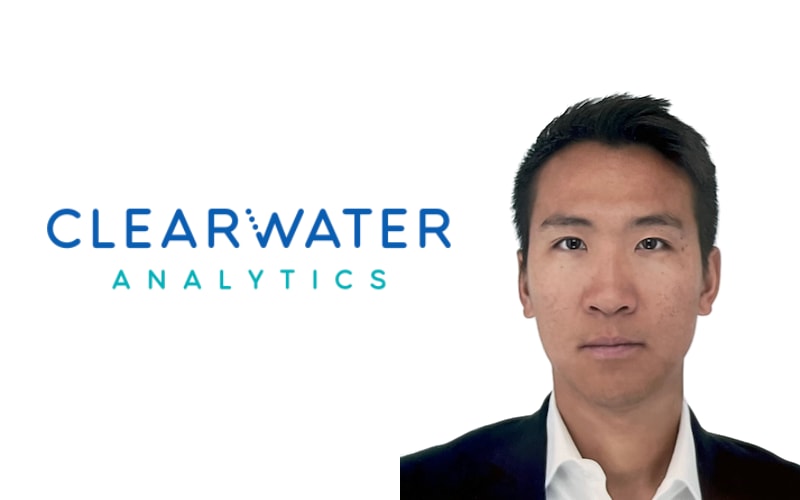In a recent interview with Reinsurance News, Wenzhe Sheng, Senior Product Manager for EMEA Prudential Regulations at Clearwater Analytics, discussed the latest developments on technical regulation and how that is impacting insurers in the European Union (EU) and the UK, as well as an outlook for the year and a view to what the future might hold.
 Founded in 2004 in Idaho, Clearwater Analytics is a fintech company that has expanded internationally and leverages the latest technology to deliver end to end investment lifecycle management, including automated and comprehensive investment accounting and analytics.
Founded in 2004 in Idaho, Clearwater Analytics is a fintech company that has expanded internationally and leverages the latest technology to deliver end to end investment lifecycle management, including automated and comprehensive investment accounting and analytics.
In the regulatory and accounting space, 2024 is an important year with notable reforms coming into effect amid constant evolution.
At Clearwater, Sheng explained that there’s a few things on the radar, such as the European Securities and Markets Authority’s (ESMA) development of the European Single Access Point platform (ESAP).
“ESAP allows the supervised entities including banks and insurance firms, pensions funds, asset managers and so on to provide their disclosures to one single platform. That is going to be used publicly by end investors to streamline their investment management process and decision process,” said Sheng.
Additionally, the final version of the European Insurance and Occupational Pensions Authority’s (EIPOA) Taxonomy 2.8.0 was released in March 2023, and many market participants are still working on a solution to ensure they are aligned with requirements.
The Taxonomy update is one of the most significant overhauls of reporting templates since Solvency II regulation came into force in the EU, and the latest release is mandated for use by European insurers and reinsurers from Q4 2023 through 2025.
“Taxonomy 2.8.0 came along as a replaceable reform as a result of EIOPA’s 2020 review of Solvency II, and similarly it has recently been done on the UK side, with an effective date of the end of this year. That’s two very key milestones respectively for the EU and the UK,” said Sheng.
Next, Sheng discussed the huge ESG initiative that’s happening in the background as the surge in the natural capital economy accelerates, highlighted by large asset managers increasingly launching blue bonds in response to responsible and green investments growing in both popularity and necessity.
“The ESG push is trying to shift investment towards green assets, infrastructure assets, etc. But capital is limited and one way you can shift that is by utilising capital released from a Solvency regime, or you try to force the current investment allocation to that type of asset.
“I think from a regulatory point of view, creating more investment allocation allowance to put into green assets is much more feasible and easier, and politically easier as well, than forcing some of the existing allocations,” he explained.
According to Sheng, this is resonating with what is observed in the regulatory reform on capital calculations, with regulators in both the EU and the UK welcoming hundreds of billions of capital requirement reduction.
Given the UK’s vote to leave the EU, there’s also a few things taking place this year which have a specific impact on the region, including the roll out of Solvency II by the end of the year.
Beyond the Solvency UK regulatory reform Phase 2 which will be effective this year, the Prudential Regulatory Authority (PRA) is conducting a review of Phase 3 with a focus on liquidity management, and Sheng explained that Clearwater is keen to engage on the topic.
“We are very pleased to join the PRA/industry roundtable discussion and look forward to working with all key stakeholders in understanding how this will impact our insurance clients in the UK,” he said.
Turning to the EU side, Sheng told Reinsurance News that there’s clear advancements in terms of the digitalisation of reporting, referring again to the ESAP platform, which is essentially a platform designed to establish a common data model. In the UK, the Bank of England is driving a similar initiative.
“Both supervisory entities are really pushing for a good technology solution to digitalise the industry’s reporting cycle so that timely and quality information can support regulator’s supervisory activities,” he said.
Looking ahead, Sheng believes that the focus will be on the tech modernisation that is being driven by different initiatives via various supervisory entities.
“ESG operationalisation is going to be very important,” he continued. “It’s on every single supervisor’s agenda in the EU and the UK. And so, that will create a junction between how the Prudential regulation is going to interact with ESG and sustainability,” said Sheng.
Tech modernisation also encompasses distributed infrastructure, so tokenisation – the process of creating a digital version of something real.
“I think firms will become more and more comfortable over the years as it exists in the market. It is similar to the Internet, when it first got introduced, nobody wanted it and now everybody has it. With tokenisation, people are being cautious as we are on the beginning of this journey. But I think just going along with the times, as regulators and markets understand the risk and how to manage them, they’re more willing to accept the benefit of that,” said Sheng.
2024 looks set to be a transformational year for re/insurers in the EU and the UK. While regulatory changes can be challenging to navigate, companies like Clearwater are dedicated to utilising modern technology to alleviate some of the pains and assist carriers as they work to operate in an ever-changing environment.


